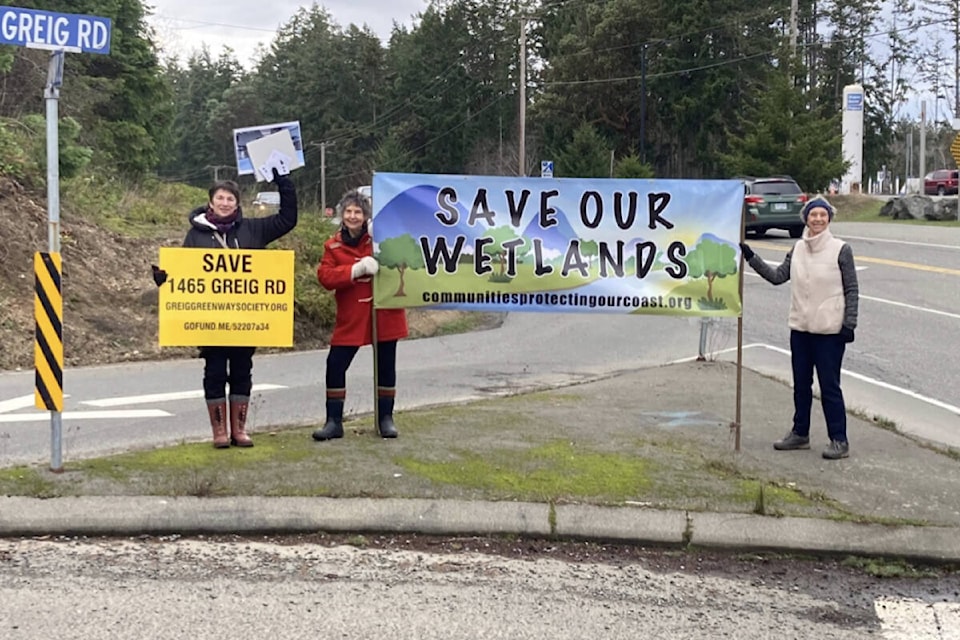A Parksville environmental society is concerned about a proposed neighbourhood development, which members say will remove an important connection between Rathtrevor Beach Provincial Park and Top Bridge Regional Park.
Developers are seeking an official community plan (OCP) amendment and a zoning and development amendment bylaw to pave the way for the 800-unit ‘Riverside’ project, which would be built out over a decade or more, if approved. It would be bounded by the Englishman River to its west and south.
Ahead of a Feb. 13 public hearing, the Greig Greenway Society has submitted a petition with 1,825 signatures to the City of Parksville’s deputy corporate officer, according to a social media post by Barbara Lowden, the society secretary.
The signatures include 926 Parksville residents opposed to the development, with the remainder providing addresses in Qualicum Beach and the RDN.
Linda Harbo, society president, said there are “many reasons” the group is opposed to development at 1465 Greig Rd.
“It’s a perfect central parcel between Top Bridge and Rathtrevor Provincial Park,” Harbo said.
She added the area is home to 1,200-metres of the Englishman River’s bank, Coastal Douglas Fir trees and wetlands, as well as threatened species like the Northern red-legged frog and the rough-skinned newt.
“In an ideal world, we would like this to be parkland and to maintain the natural feel to it,” said Heather Ranson, society vice-president.
READ MORE: Developers present more details on proposed 800-unit Parksville neighbourhood
The property is popular with dog walkers, runners and moms with strollers, Ranson added.
“It’s very flat and accessible,” she said.
The society also worries the proposed neighbourhood will create urban sprawl.
“This would be a satellite community,” Harbo said. “It’s going to have a negative impact on traffic. It’ll have an impact on people having to drive everywhere they want to go.”
District Developments, during a presentation to council in December, spoke to concerns such as wildlife habitat, the area’s existing trail network, increased traffic and insufficient civil infrastructure.
Mike Nygren, president and CEO, said a traffic study done in conjunction with the city and the ministry of transportation, confirmed acceptable levels of service to accommodate the development.
Harbo went for a run in the area eight months ago and noticed a sign advising that the property was being considered for development.
“That’s when I decided to stand up for this property,” she said. Harbo began canvassing and asking neighbours and community members what they want to see happen to the area.
The society has also put on informational forums and spoken to members of council about the issue, Harbo said.
In the future, the Greig Greenway Society hopes to work with organizations such as BC Parks Foundation and The Nature Trust of BC, to work towards purchasing the property.
“If they don’t rezone, then the assessment value of the property and, maybe the purchase price, would go down significantly,” Harbo said.
District has proposed commitments, including: rental housing as the first 100 units built, securing 53 acres of land as green space, a flood level agreement with 500-year floodplain, an updated traffic agreement after 400 units and securing public access to trails.
Forty per cent of the 140 acres will be developed, according to District, who anticipates the first residents are not likely until 2025, should the project be approved.
After the public hearing, the proposal will need to pass a third reading by council before it can be given final adoption.
More information about Greig Greenway Society can be found on its website and Facebook page.
